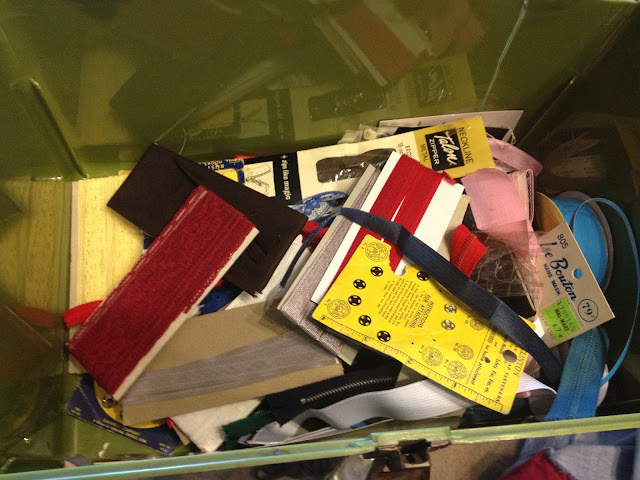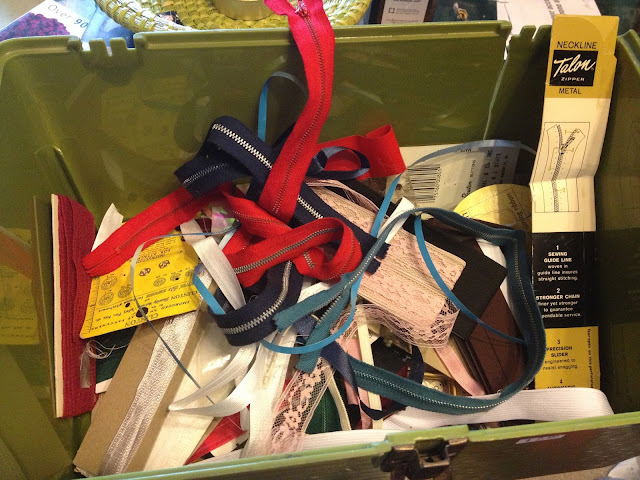I could make 50 of these lists (and who knows, I might!) but I wanted to start things off with my top 10 thrifting tips to live by. I can tell you countless times of hearing of "thrifting failures", so here's my informerical promise to you: Live by these tips and you WILL succeed.
[1] List out things you want (even if it's not a priority) and the things that you actively need.
Leave nothing untouched because you never know what you will find! I have a running list in my carry around notebook of things that I need for home, in my wardrobe, or for projects. This makes it so much easier when I am in the store and find things that I "may" want.. I can reference my list and help to make my decision. This is also a great place to keep a list of things that you want in your wardrobe.
[2] Grab now, think later.
One of the beautiful things about thrifting is that there are usually no two things alike in the store. One thing that I always coach people to do is to put anything you have the potential of wanting in your cart, shop it around and then decide. Two things come from this. The first is that you secure that item in your posession, instead of the hands of the person coming down the clothing line behind you that may take it if you don't. It's better to put something back at the end of a shopping trip, then to think of something while you shop around, only to return and find it gone (and that WILL happen.). Talk about disappointment! Once you're finished shopping, you can then assess your loot and narrow down the items that you truly want to take and the ones that you want to put back on the shelf/rack. This editing process is crucial if you wish to avoid impulse purchases that lead to over spending!
[3] Think Creatively.
Just because something is dirty, doesn't mean it can't be washed. Liken many things to a cast iron product. It's pretty much never dead until it's in pieces. Unless an article of clothing is terribly damaged, it can be fixed. Housewares can be painted and things can find a new life in new ways. I often buy things for certain elements, I get it home, take those off and reuse the rest. Part of thrifting as a lifestyle is to have an upcycle mentality. Without that, you're missing out on half of the greatness that you can pull from a killer thrifting find.
[4] Know Retail Prices.
I don't mean that you need to be a walking price gun, but it is a good idea to have a running rate of things that you typically shop for. Most thrift stores are great at pricing, while others just take a shot out in the dark and end up over charging for some items. Have a grasp on what your clothing and accessories typically run (especially for smaller pieces like belts, wallets, etc) and have a general idea of wall art and appliances, as those are often priced higher than things such as clothing. I rarely run into this as a problem, but this tip is super useful for the newly minted facebook sales groups that are popping up. Don't get "had" by folks out to make a quick buck, know your retail prices!

[5] Shop Often.
You will find new things while you shop, so imagine what you're missing when you only thrift once in a blue moon! Go often, and if you can, go when they put out fresh stock! Many stores will run super discounted specials also, so it's great to know what is going on and when. We'll get to that a little later though.
[6] Map The Sales.
Know your stores in the area (or area that you are going to) and if at all possible, know the sales. Know if they run $1 sales from 10-4 or if they do dot sales on certain days of the week. From there, you can organize your trips and optimize to hit each sale to the best of your ability. This may sound extreme, but once you find your pattern, it won't be a huge deal at all!
[7] Look around the store at least twice before leaving.
I always do a twice and sometimes third around when I go to the thrift store. Things may be put back on the rack, or come fresh from the processing table while you're looking in another section. This is often when I find my best finds, so go ahead, do your store pattern, and then do it once more and see what you find!
[8] It's okay to leave empty handed.
Epic fails are to be expected. You will win some and lose some, but the wins will more than make up for your failures. The more you shop, the better you will be at spotting something that's a great find. If you end up empty handed, get back in there in a few days and try again. The great part of thrift stores is that they aren't chain retail establishments that carry the same stock for months at a time; every day is a new day for "new" things!

[9] Shop at LEAST 3 sizes up and 3 sizes down.
I'm a really big girl, the kind of big that you can't find often in normal stores, but because of an open mind, I have never had trouble finding things that I enjoy. I've purchased sizes that I'd never dream of fitting in a traditional store, but because many items are vintage or made from brands that aren't commonly seen, you'll find the fit to often be even better than off of the rack. This rule is also useful for those items that have been "hidden" for future purchase (because someone decided to not follow tip #2). I've found things hidden everywhere, so get to hunting!
[10] Set a spending limit.
I have my own way of doing this. I have an ideal limit, and then my "OH MY GOD I FOUND ALL THE THINGS" limit. They are often within 10 dollars of each other, but a limit will keep you in check. It's easy to get carried away and impulse buy things you don't really need, so when you get to the editing phase of tip #2, you have a limit to reference so that you don't spend out of your means!
Spray paint is your friend. So is sanding, drilling, cutting, seam ripping, and barrels of acid (okay, not the acid.. unless you're doing some hardcore upcycling). The point is, look past what you see and know that there's nothing a $2 can of paint can't fix!





















